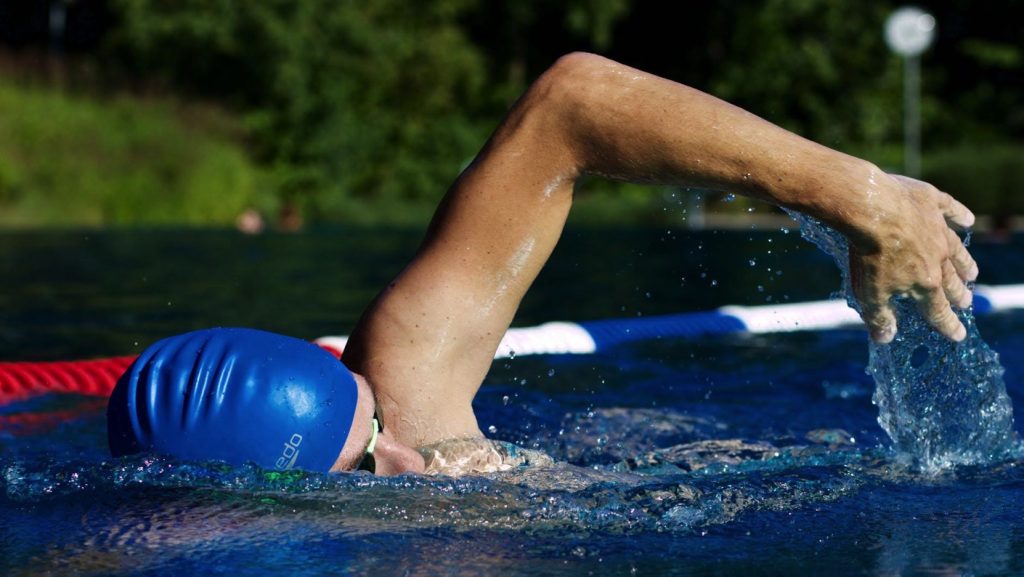Some people say that the only way to improve your running is to run. This is not the case. Even the most elite athletes substitute running sessions for cross-training work outs to give their bodies a break.
It wasn’t until I had a severe injury (ruptured plantar fascia that meant no running for over a year), that I truly began to appreciate the benefits of cross-training and the importance of giving your body a break, even when not injured.
Cross-training not only reduces your chances of injury but improves your cardiovascular system, muscular imbalances and aids in recovery. For these reasons, cross-training should be part of every runner’s training plan.
So what exactly is cross-training?
Cross-training is any exercise or activity that complements or enhances your sport.
Some of the benefits of cross training are set out below.
Reduced risk of injury
Many people may not realise just how high-impact running is (especially when running on bitumen roads or in spikes on a track laid over concrete). The repetitive impact of running can cause significant strain on muscles and joints resulting in painful injuries.
When cross-training, you can target muscles that you do not use when running to balance your weaker muscles with your stronger ones, resulting in a reduced risk of injury. Pilates is especially great for strengthening those under-utilised muscles.
Additionally, participating in low-impact cross-training activities, such as swimming or water running, will lessen the stress on your joints, which is critical for the longevity of your running life.
Variety
Aside from reducing injury risks, a key benefit of cross-training is that it adds some variety to your exercise regime.
The more running you do, the more likely you are to burnout or lose your enthusiasm for the sport. Most runners at some stage will experience periods in their training where they feel bored or unmotivated to run. Cross-training can be a great way to work through these periods and give runners a much-needed mental break. This can be especially important for those training for long-distance events such as marathons.
Improved cardiovascular fitness
Many cross-training activities are great cardiovascular workouts, so they build on those similar benefits of running and can increase your V02 max which will assist with your running.
You can still train while injured
Runners suffering from injuries are sometimes told by their doctor to take a break from running during their injury. However most runners are not the type of people to do nothing and can find taking a break from exercise very difficult mentally.
Doing some form of exercise can help injured runners maintain their fitness and deal better with the frustration and disappointment of not being able to run. For those of you who have already experienced an injury or are going through one now, you will know that sometimes dealing with the physical pain of the injury is not as hard as coping with the psychological strain of not being able to do the thing you love.
With most (running related) injuries, there is usually some form of alternative exercise that can be done which will not exacerbate the injury. When I first ruptured my plantar fascia, I could not do anything where I had any weight on my foot (including standing). I found mat based Pilates was excellent for building core and upper body strength and water running (without a life belt) was a useful alternative for maintaining cardiovascular fitness.
How much should you cross-train?
It is always best to discuss all forms of training with your coach and if injured, your doctor or physio. However, a good starting point if you are new to cross-training is to switch one run per week with a different type of exercise and see how your body feels (noting you may feel sore the first couple of times from using muscles you don’t normally use!)
If you have an injury that prevents you from running you may need to cross-train more frequently.
For me personally, I have never been able to fully shake my plantar fasciitis injury, however to reduce its severity and so I can still run and compete regularly, my coach includes one pool-running session in my program per week and often substitutes my Sunday long-run for a stationary bike session. This reduces my load from 6-7 runs per week to 4-5 and despite the reduction in the amount I run, I am getting fitter and faster.
What are good cross-training activities for runners?
Water Running: Water running is an alternative for injured runners or as a substitute for a running workout. You can start by using floatation aids (vests, belts etc.) and as your fitness increases slowly remove the aids. My weekly water running session involves 20 x 1 minute intervals of water running in the deep end of the pool with 1 minute rest between each interval (with no flotation aid).
Swimming: Swimming is also a great cross-training activity for running because it is non weight-bearing and gives your joints a break from the stresses of running. Swimming is also great as it improves lung capacity, strength and endurance.
Cycling: Cycling is a low-impact way to improve your cardiovascular fitness and strength. Cycling utilises muscle groups that are in opposition to those you use most with running, especially your quads and glutes.
Elliptical: If you have access to an elliptical machine, this is a great alternative to running because the muscles used on the elliptical are similar to those you use when running. The benefit of the elliptical over running is there is very little (if any) impact so is a useful alternative if the reason you are cross training is injury related.
Pilates and yoga: Pilates is probably my favourite form of exercise (other than running of course) as it emphasises core strength which is critical to be a good runner. Yoga is also a great form of corss-training for strength development. Many runners are drawn to yoga to also develop flexibility and to increase the range of motion in areas which tighten as a result of running training.
Strength training: Strength and resistance training using weights allows runners to improve the strength in muscles used in running (such as the hamstrings, quads, glutes, calves, back, chest etc.) and create a balance between unbalanced muscle groups.

Cross-Country Skiing: This can be a difficult cross-training exercise to do regularly unless you live in the mountains, but if you are able to cross-country ski then it is (arguably) the best cross training exercise for runners. With cross-country skiing, you’ll get a great cardiovascular workout and focus on many of the same muscle groups as running. It is very low impact so ideal for runners with injuries.
Take-away message
Cross-training plays a crucial role in keeping us active and injury-free as running too much can lead to a greater incidence of injury and actually slow your progress and performance.
Cross-training activities are meant to complement and enhance your running by giving your muscles a break from running while still allowing you to keep fit and strong. It also adds variety to your training which can assist in your motivation to run and prevent burnout.
Article by Caitlin Murdock for Runner’s Tribe




















